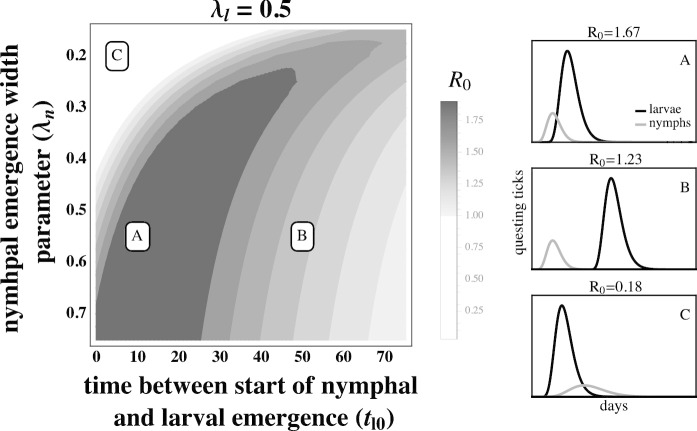Fig. 12.
The basic reproductive number, , of B. burgdorferi is greatest when larval emergence begins shortly after nymphal emergence such that larvae are active during the peak in mouse infection prevalence. The left-hand panel depicts as a function of the time between the start of nymphal and larval emergence (), and the nymphal emergence width parameter (), and the letters indicate the parameters for the within-season dynamics on the right-hand panels. (A) Concentrated nymphal emergence (large ) coupled with a slight difference between when nymphs and larvae begin emerging () increases the probability that questing larvae feed on mice recently infected by nymphs (). (B) Greater differences between when nymphs and larvae begin emerging () result in lower mouse-to-larvae transmission rates as many mice infected by nymphs die and are replaced by mice born uninfected such that larvae are likely to feed on uninfected mice (). (C) Synchronous emergence () can also reduce B. burgdorferi fitness when nymphal emergence duration is long (small ) as many larvae feed before nymphs infect mice (). is calculated assuming tick emergence is Gamma distributed. (see Appendix A). All other parameter values are shown in Table 1

